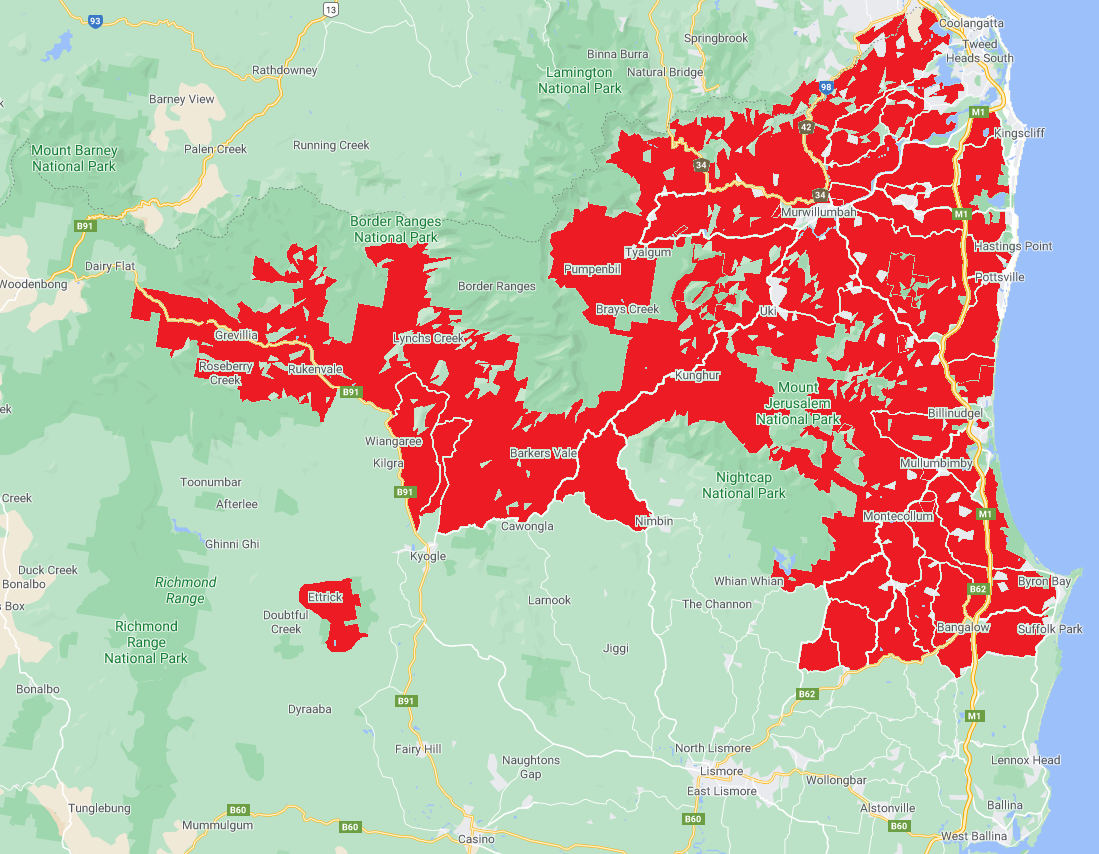Pasture Die Back Update
24 Jun 2021
Pasture dieback is a condition that ultimately kills all C4 grasses that are commonly grown in NSW. the first confirmed case of pasture dieback in NSW was near Murwillumbah in March 2020. Since then, it has continued a slow, uneven spread across the Far North Coast. It is important to note that its ‘spread’ is irregular, some properties are being affected, and others, even neighbouring properties, are not. The condition can stop at roadways, stock tracks, and even fence lines, so knowing pasture dieback is in an area does not mean that every property will be impacted.
Map showing where Pasture dieback is known to occur on the far north coast as of June 2021.

Symptoms of pasture dieback on grasses include;
- Yellowing, reddening and purpling starting at the tip and moving along the leaf blade
- Stunted and unthrifty plants with fewer leaves and tillers
- Patches of discolouration less than one to several square metres in size
- A rapid increase in the size of the infected area, particularly after rain
- Grasses die, and remaining plant material easily crumbles when handled
- Broadleaf weeds and legumes colonise patches where grasses have been killed
It often starts in small patches in parts of a paddock, such as near trees or fence lines and spreads. Once the patches have joined, entire paddocks can be lost. The rate of spread can be as much as hectares per week when pastures are actively growing during spring, summer and autumn, especially following significant rainfall or as little as a few square centimetres during winter. High biomass ‘locked up’ paddocks or pasture areas with low use appear most impacted.
Current research shows that pasture dieback appears to be a complex interaction of multiple contributing factors, including the environment. A couple of insects have been identified as potentially causing pasture dieback. Pasture mealybug has been recognised with all cases of pasture dieback in NSW. Evidence is mounting toward Pasture Mealybug being considered one of the leading causal agents of pasture dieback. Research to identify the cause is ongoing. There are control options for mealybugs. Farmers are encouraged to read this information first before spraying Controlling pasture mealybug (nsw.gov.au)
So far in NSW, pasture dieback is most commonly seen in undulating to steep grazing country, primarily on beef properties and dry cow country for dairy farms. It has yet to be seen in high fertility, high utilisation, flat country, which is typical of most far north coast dairy farm milking platforms.
The premature death of pastures can lead to feeding shortages. Luckily Legumes, herbs, ryegrass, winter cereal crops, millet, sorghum and maise are not affected. These have all provided valuable opportunities to fill feed gaps.
There have been several cases of pasture dieback events historically in QLD, and ultimately the country does repair itself, and grasses will return. QLD experience suggests that it can take 1 to 6 years for full grass recovery with no intervention.
North Coast LLS is running trial sites on the Far North Coast looking at resowing tropical grasses, the use of fertilisers, microbial products and biomass utilisation as ways to keep farming with pasture dieback.
You can keep farming with pasture dieback successfully. The strategy you use to manage will be based on your unique situation and the proven strategies at that time.
Some valuable resources for pasture dieback include:
- MLA Pasture dieback manual MLA-pasture-dieback-manual.pdf
- Pasture Dieback update for the NSW North Coast https://youtu.be/1WfO2-7II24
If you suspect you may have pasture dieback contact your nearest Local Land Services office. Alternatively, you can contact:
Nathan Jennings on M:0437083147
James Geary on M: 0428263669